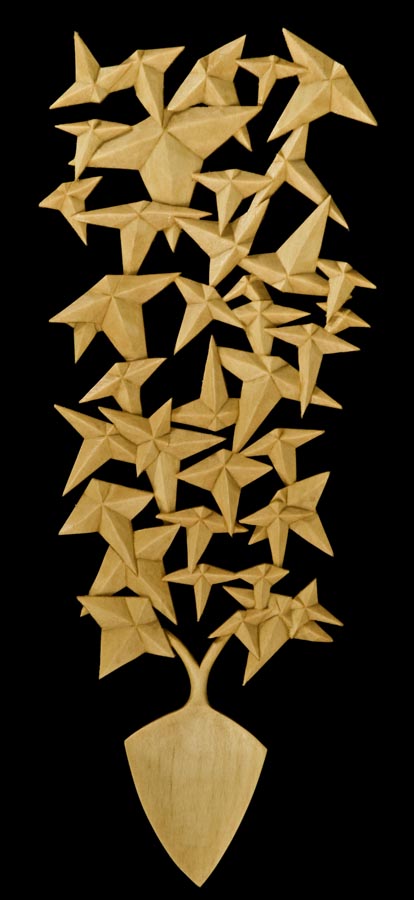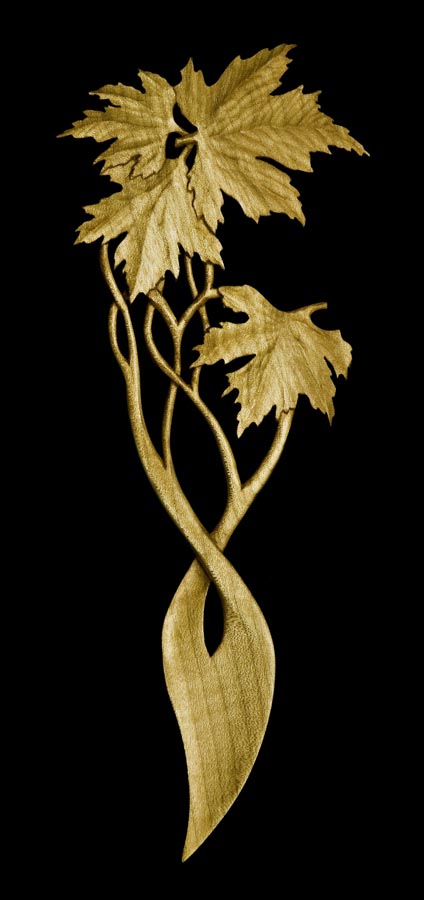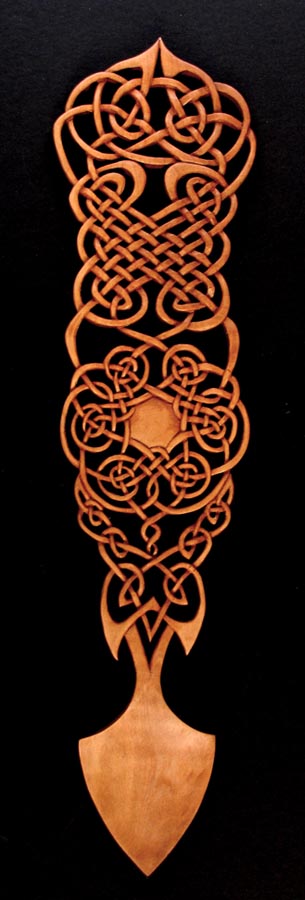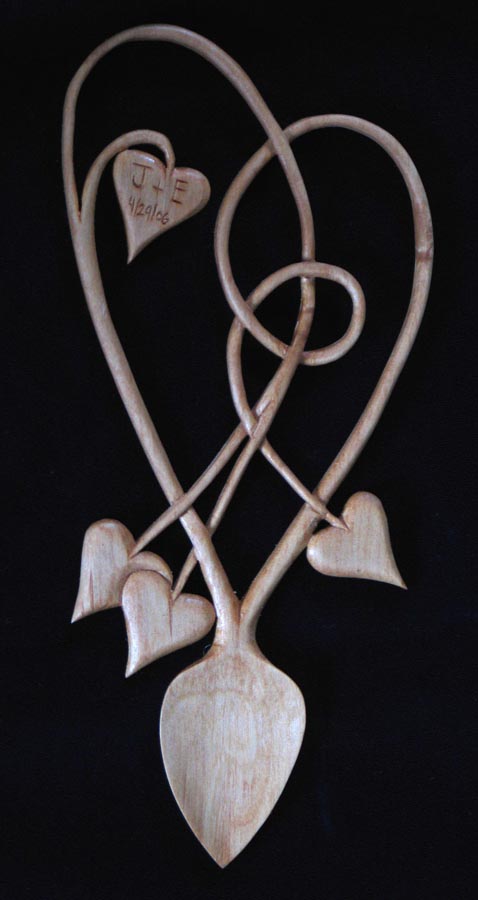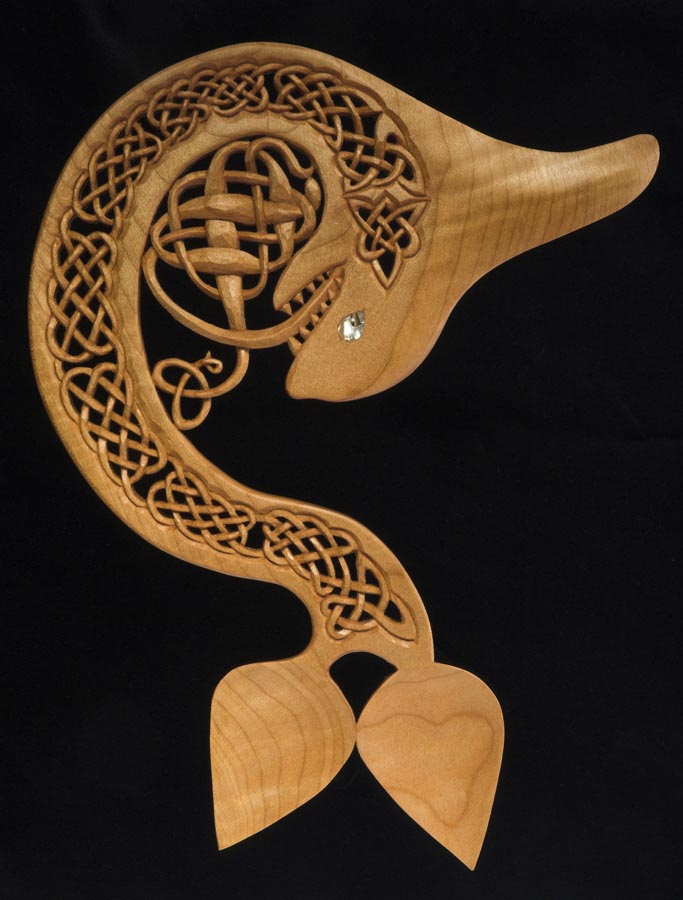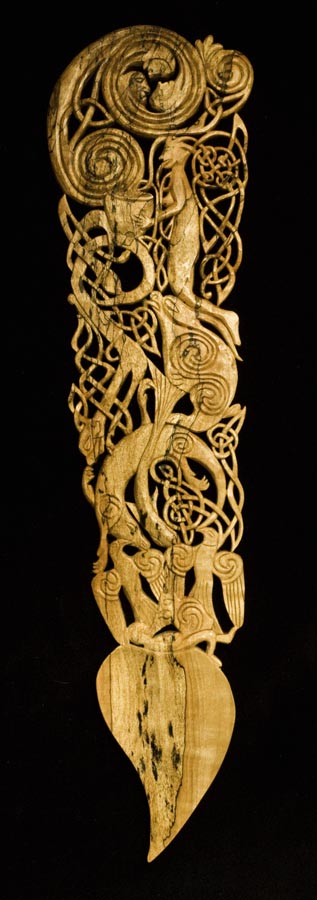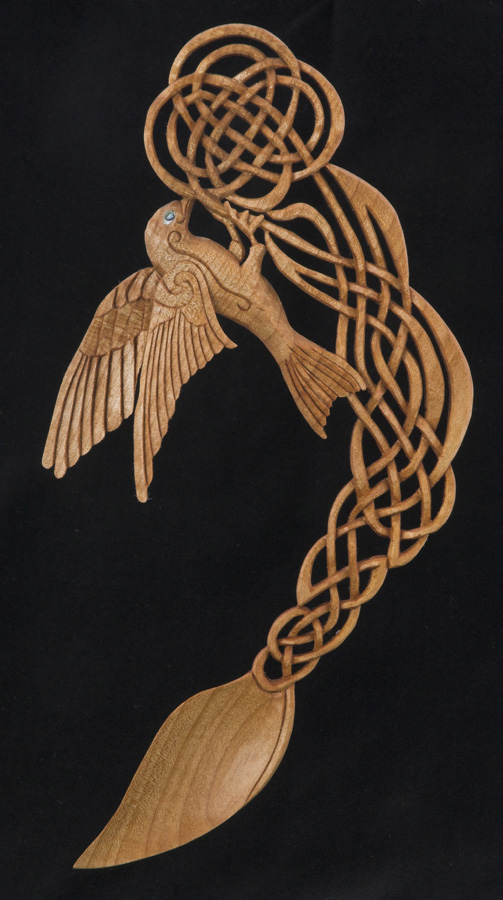
I’ve got a lot of wooden spoons in my kitchen, and I can assure you not one of them bears the slightest resemblance to what David Western carves. His are spoons in name only. A far more accurate description would be “intricate portable carved wooden art,” but for Dave, they are even more than that. For him, they encompass history, tradition, romance, and perhaps most important of all, Welsh pride.
“I was born in Cardiff, Wales,” Dave recounted when I asked him about his woodworking past, “and my family emigrated to Canada when I was a kid. I never really did any woodworking until high school, where I had a really good shop teacher who got me fired up about cabinetmaking. While I was in university, I worked for a cabinetmaker during the summers and a kitchen cabinet shop during the year.
“After college, I went to Europe to travel and discovered the London College of Furniture. I took an accelerated course because I already had woodworking experience, and a year later emerged with a ‘City and Guilds accreditation in cabinetmaking.’ I came back to Canada and started my own cabinetmaking shop, but a few years later went to work with a friend’s company. I wanted to get my journeyman’s papers, which helped get union jobs, and tested out of the coursework by simply passing the final exam.
“Back when I was about 14, my family went to Wales, where I first came across love spoons. For many years, I would occasionally make one. About 10 years ago I started researching love spoons and got into them seriously. The more I delved into it, the more passionate I got about them. For me, they represented a connection to my roots and allowed me to celebrate my Welsh pride. About three years ago, I gave up cabinetmaking entirely to concentrate full-time on spoons.
“What I hope to do with these is to create a portable piece of art that the owners can connect with because it has personal relevance to them. Originally, the love spoon was carved by a young peasant man for a young rural woman who caught his eye. There were two reasons: one was to indicate that he was smitten, and the other was to show off his skill. In those days, that was a fairly significant skill to have. The ability to work with your hands was important back in the 17th century, when this craft originated. By the early to mid 19th century, the finest examples of the craft emerged. One thing I learned while writing my book about love spoons is that many other cultures, including Hungary, Italy, Romania, Germany, Austria, Sweden and Norway, all had similar traditions.
“The tradition waned around the period of the first World War, but revived somewhat in the 1950s. At that point, many realized they could work faster using power tools, and the spoons started being sold as souvenirs. On the one hand, it is sad to see how they have cheapened, and for me and others in Wales who still do it as a handcraft, seeing that sort of tawdry development is sad. However, on the positive side, it does keep the tradition alive.
“I try to make each spoon a little piece of art, so that it has feeling and an emotional quality as well as a visual and technical excellence. I don’t want mechanized purity, but I do care about quality of execution. I want each spoon I make to be as good as I can do at that point. Of course, I cringe at times when I look back at 10-year-old pieces, but that is part of growing as an artist.
“Even though they may often be very subtle, the bowl is a very critical element to me. During my research on their history, I noticed that no matter how crude the spoon carving was, a tremendous amount of effort was put into the spoon bowl. They were smooth, thin and delicate, unlike the current run of souvenir spoons, which tend to have thick, clunky bowls. To my mind, no matter how nice the handle design is, the delicacy of the bowl is critical.
“A number of years ago, I put up a website. Prior to that, I was making them only for friends and relatives, and my business was all word-of-mouth. Since then, I have started getting complete strangers contacting me. Originally, most of my business came from Britain, but a few years ago an article in a national Canadian newspaper gave me a good bit of exposure. About the same time, people from the United States started discovering me, and these days about 70 percent of my business comes from there. The vast majority of my customers have no Welsh background; they are simply intrigued by the spoons.”
Some spoons can be very intriguing indeed, such as the one that ended up in the Museum of Wales. I asked David to tell me the story behind it. “It tells the tale of Taliesin,” he explained, “a young man who was a servant to a witch. She had a hideously ugly and stupid son, so she brewed a potion to give him ultimate strength, knowledge and beauty, represented on the spoon by three heads. Instead, the servant drank it, and he got all these powers.
“Angry, she came after him, so he turned himself into a rabbit and ran away. She then turned into a greyhound to chase him. Just before she caught him, he turned into a salmon and went into a stream, and she turned into an otter to give chase. He turned into a bird, and she turned into a hawk. Finally, he turned into a grain of wheat, so she turned into a hen and swallowed him. He then turned into a baby inside her, and when she had the baby, and it was so beautiful she couldn’t bear to kill it, so she put him in a boat out to sea, where he was rescued by a neighboring king. He was named Taliesin, which in Welsh means ‘fair brow,’ and he went on to become Wales’ most famous bard and a mythic hero. Intricately carved into the spoon are all of the images from the story.
“About two or three years ago, I started teaching spoon carving at a local college, and that inspired me to write a book on the subject. Carving spoons takes very few tools. Other than using a scrollsaw to rough out the main shape, I carve using a tiny straight knife, a few small wood chisels, a flexible knife, and North American Native style bent knives. It’s almost all hand and knife work. My workspace is basically a chair in front of a two-foot-deep counter about three feet wide.
David is quick to suggest that others should try their hands at his favorite work. “As fellow Welsh spoon carver Alun Davies said, “A spoon is not a love spoon unless it is made with love: love for the tradition, love of the wood, and love for the person the spoon will be given to.’ If you have a romantic occasion coming up and you are at all handy with tools,” he advised, “this is an occupation that can give both you and the recipient a great deal of pleasure.”
photos by Chris Roberts
